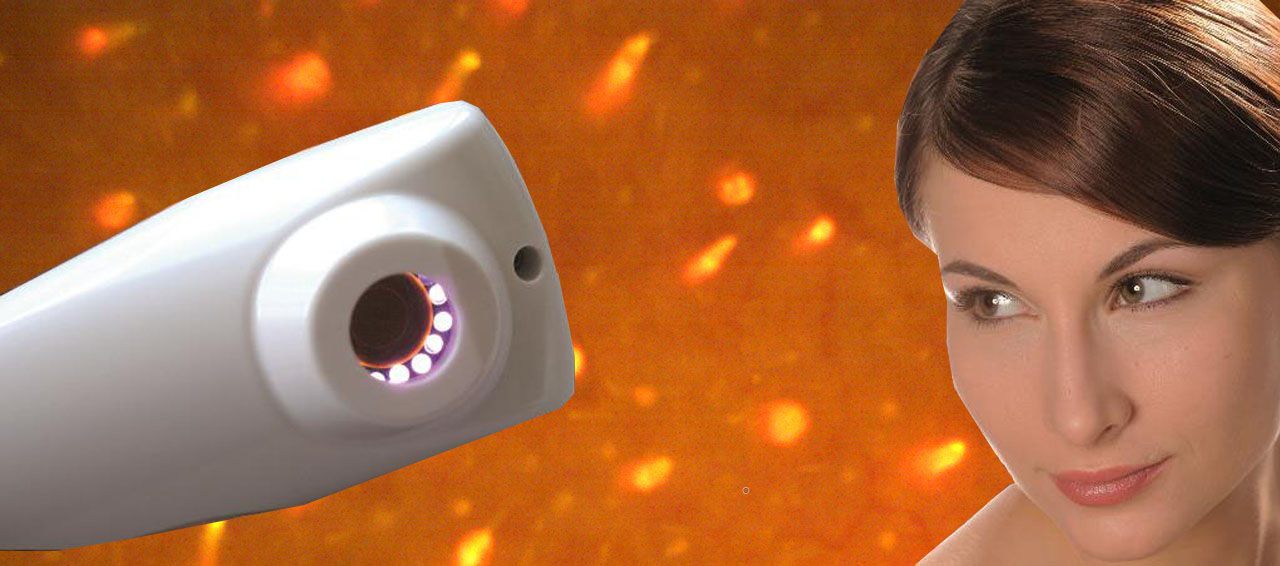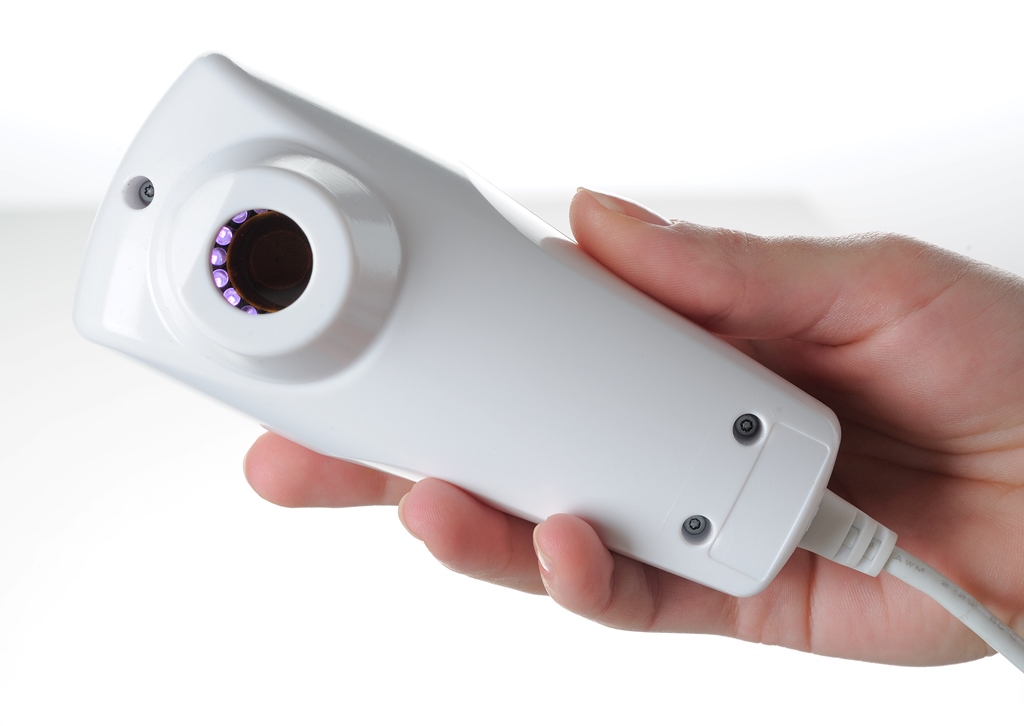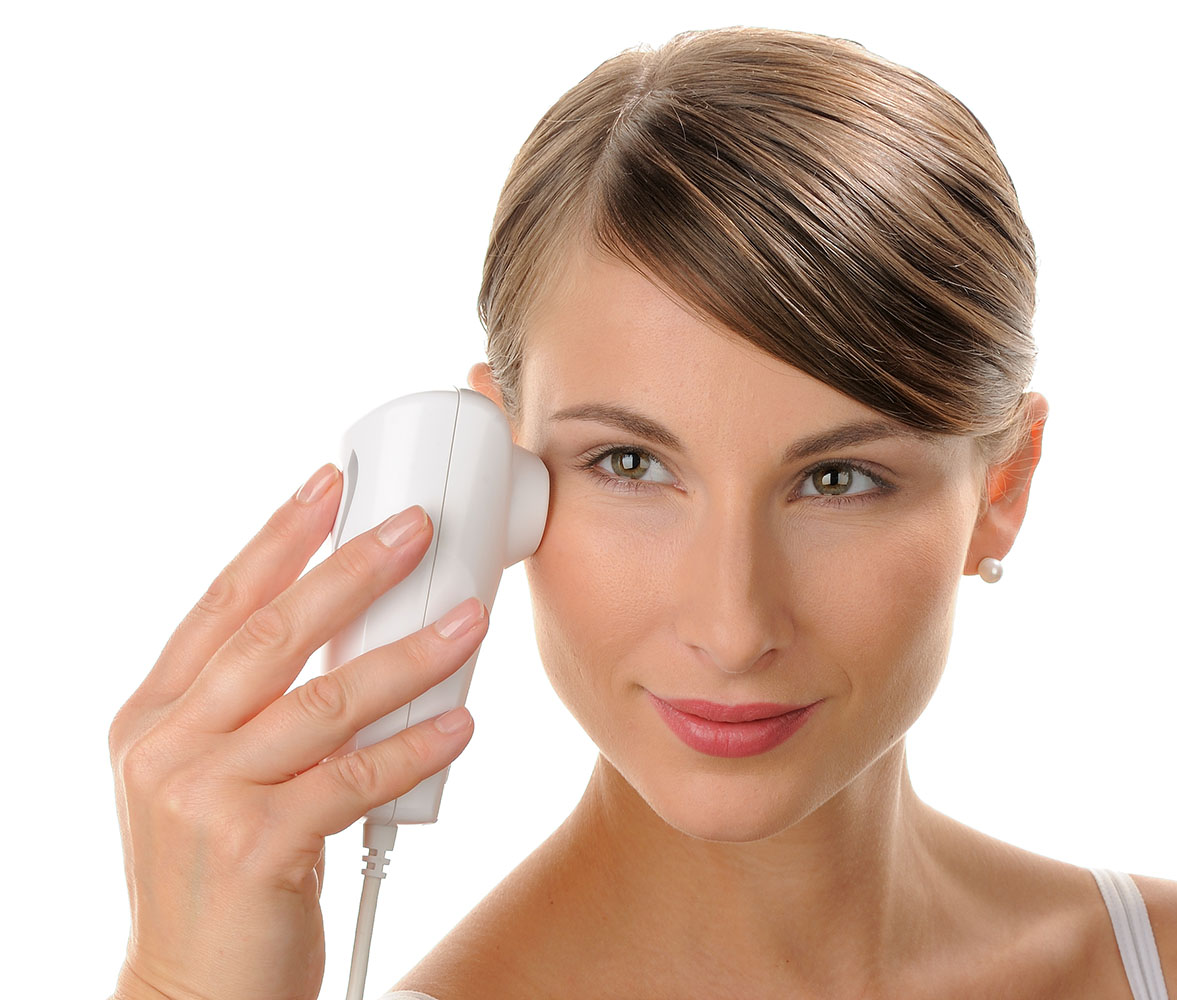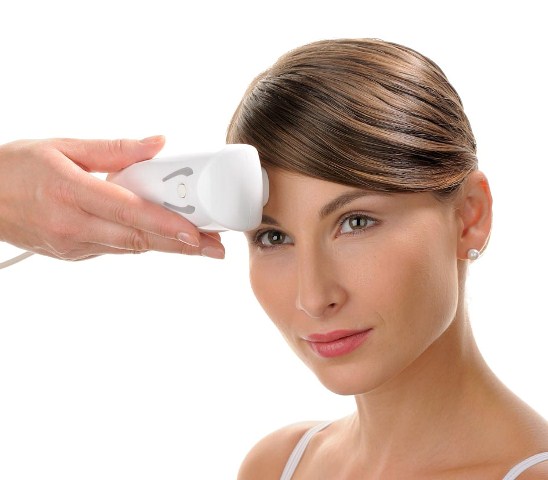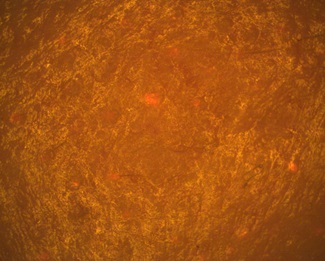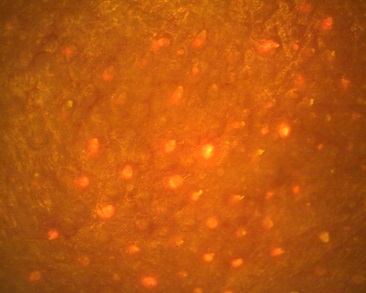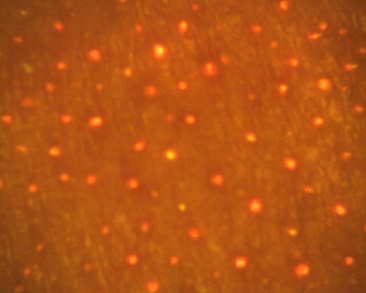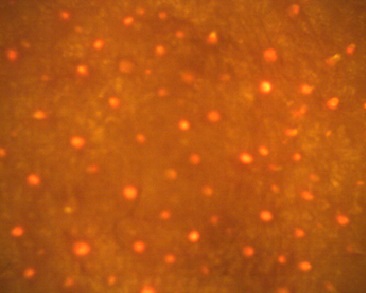Visiopor® PP 34 N
Monitoring Acne Lesions by Skin Fluorescence
The Visiopor® PP 34 camera uses a specific UV-light to visualize the fluorescing acne lesions of an area of minimum 8 x 6.4 mm. The orange-red fluorescence indicates the presence of Propionibacterium acnes bacteria within clinically non-evident (follicular impactions and microcomedones) and clinically evident lesions (comedones, papules and pustules).
-
What is measured?

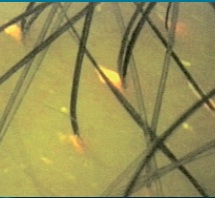 Skin impurities are a common disorder of the pilosebaceous follicles with the multifactorial pathogenesis. It typically begins in adolescence when androgen hormones stimulate the production of sebum and proliferation of follicular epidermis. The openings of hair follicules become clogged with oil secretion and corneocytes. In consequence initially invisible lesions (microcomedones) and then clinically evident comedones develop. Microcomedones and comedones are further colonized by the Cutibacterium acnes that occurs in the natural bacterial flora of human skin (skin flora) and may promote inflamed acne lesions (papules and pustules) through the production of proinflammatory mediators, free fatty acids and porphyrins. The presence of porphyrins can be detected by their orange-red fluorescence when viewed under special UV-A light. The intensity of the fluorescence indicates the severity of the skin impurities. A cosmetic improvement is shown by a clear reduction of the fluorescence in quantity and intensity.
Skin impurities are a common disorder of the pilosebaceous follicles with the multifactorial pathogenesis. It typically begins in adolescence when androgen hormones stimulate the production of sebum and proliferation of follicular epidermis. The openings of hair follicules become clogged with oil secretion and corneocytes. In consequence initially invisible lesions (microcomedones) and then clinically evident comedones develop. Microcomedones and comedones are further colonized by the Cutibacterium acnes that occurs in the natural bacterial flora of human skin (skin flora) and may promote inflamed acne lesions (papules and pustules) through the production of proinflammatory mediators, free fatty acids and porphyrins. The presence of porphyrins can be detected by their orange-red fluorescence when viewed under special UV-A light. The intensity of the fluorescence indicates the severity of the skin impurities. A cosmetic improvement is shown by a clear reduction of the fluorescence in quantity and intensity. -
Advantages of the Visiopor®
- The Visopor® is USB based and can be connected directly to a computer.
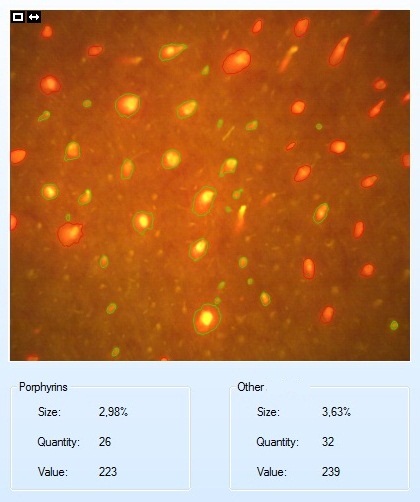
- Non-invasive, easy to use and economic.
- It comes with an easy to handle evaluation software (distinguishing the reddish-orange porphyrin bacteria from other yellowish-greenish fluorescents in quantity, size and intensity).
- The colour thresholds to distinguish between porphyrins and other fluorescents can be set manually by the user.
- All results for the porphyrins and the other fluorescents can be exported into Excel® spreadsheets for statistical evaluation.
- The camera is also suitable for porphyrin detection on the scalp.
- Interesting literature has been published with the device.
- The Visopor® is USB based and can be connected directly to a computer.
-
Fields of Application
 There are numerous applications in cosmetology and dermatological basic research.
There are numerous applications in cosmetology and dermatological basic research.- Efficacy testing of anti-bacterial products, cleansers and drugs against P. acnes
- Determination of the comedogenic and comedolytic activity of topically applied products
- Typical claims (examples) substantiated with the Visiopor®: anti-acne, anti-bacterial, anti-comodogenic, against imperfections, cleaning/purifying, against oily skin/scalp, pore refining/pore activity decreasing and many more.
A very interesting application is the evaluation of the duration of UV-A protection in vivo. UV-A protection is a very important factor in modern sun screen products. When applying UV-A protection to the skin, porphyrin fluorescence visible before with the special UV light of the Visiopor® is no longer visible and can only be seen again, when the UV-A protection on the skin surface is gone.
-
Technical Data
Dimensions: 12 x 5.5 x 5.5 cm, Weight: 220 g, Cable length: 1.5 m, Port: USB 2.0, Power supply: 5 V DC via computer, UV-light source: 16 UV-A- LEDs, 375...385 nm, Resolution: 5:4, 1280 x 1024 pixel, Image size: minimum 8 x 6.4 mm, Camera button freezes the image
Computer: Windows® 10, USB 2.0/3.0, performance must meet system requirements (please ask for computer requirements).
Technical changes may be made without prior notice.


